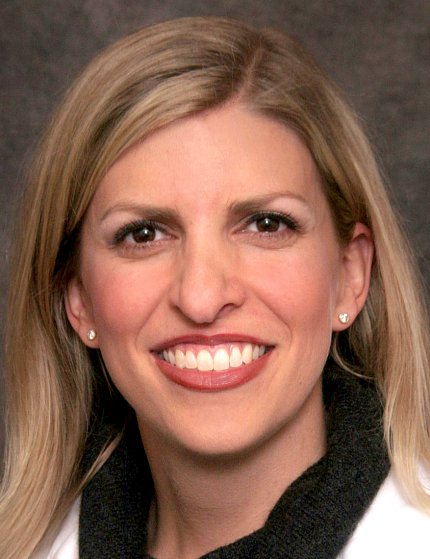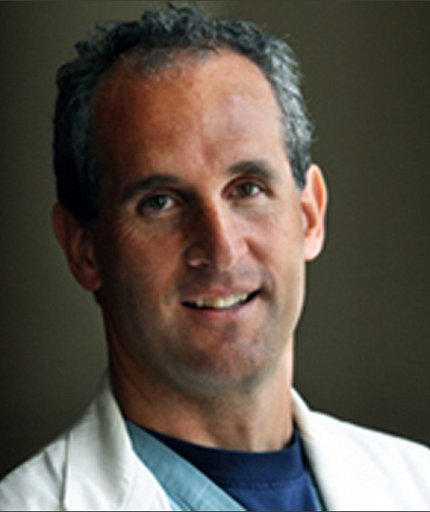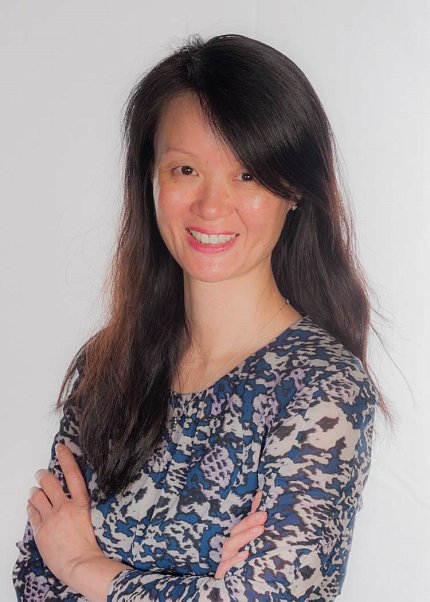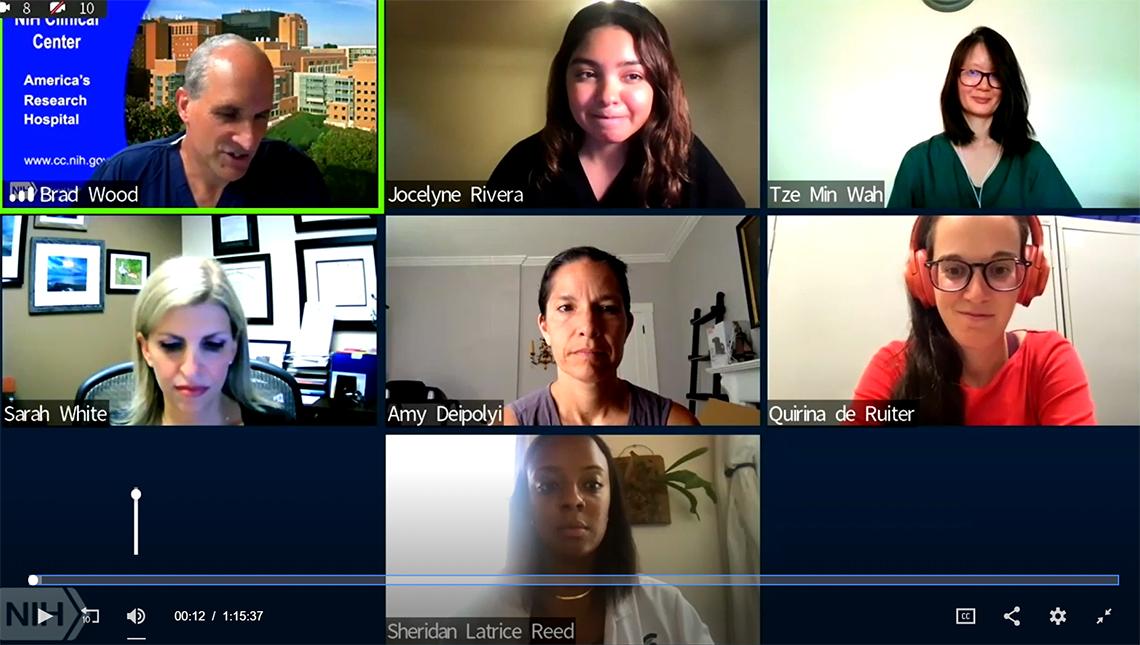Researcher, Clinician, Educator
Triple Threat: How One Woman Does It All

There are plenty of researchers, clinicians and professors out there, and many juggle some or all of these roles. And then there are powerhouses who perform all three roles to the utmost degree. Sarah White, M.D., MS, FSIR, FCIRSE, is one of them.
Self-described as a “triple threat,” White is an interventional radiologist and a professor of radiology and surgical oncology at the Medical College of Wisconsin (MCW). She shared her experiences in a lecture titled: “Triple Threat of Teaching, Research and Patient Care: Easy as 1-2-3,” part of a new monthly lecture series, “Women Leaders in Academic Research,” hosted by NIH’s Center for Interventional Oncology.
The series highlights and honors women leaders in academic research, especially related disciplines of interventional radiology (IR), biomedical engineering, radiology, imaging sciences, data science and image-guided oncology. The series was established as a small effort to help counter the under-representation of women in academic research and the impact of gender disparity and implicit bias on role modeling and mentoring.
Can this balancing act of three priorities still be done? White asked her viewers.

“I wanted to do all three,” she said, “because I love teaching, research is integral to who I am and I really want to propel the field of interventional radiology forward.”
White received her M.D. from New Jersey Medical School and worked with Dr. Brad Wood at NIH one summer, forging a friendship that continues to this day. The IR field is overwhelmingly male (93 percent), and White experienced some of that male-centric bias several decades back, while at NIH as a summer intern.
“People kept calling me nurse,” she said, and she realized that, as a woman, she was a “different species” in her field. She has never seen herself as different, but she began to realize that others did. She learned to not accept “no” as an answer and used adversity to make herself tougher.
White was the University of Pennsylvania’s first DIRECT (Diagnostic and Interventional Radiology Enhanced Clinical Training) pathway resident. At first, she felt ostracized from her coworkers because they were surgeons, and she was an interventional radiologist.
“They tried to kill me [with long working hours],” she recalled. “I said ‘bring it on.’” She worked longer hours and made herself indispensable.
“By the end, they wanted me to switch to surgery,” she laughed.
White is now a professor of radiology and surgical oncology at MCW, but also considers mentorship to be an integral part of her career.
“The most meaningful way to succeed is to help other people succeed,” she shared. Mentors are everywhere, she added, although you may need to work to find them. She also recommended serving on committees, as those leadership roles can help you achieve qualifications for promotion.

She is still a practicing researcher and clinician at MCW in addition to her professorship. How does she make it all work?
Find a clinical niche for yourself, she recommends. Learn a new procedure or treatment strategy and you can become the local expert, which will lead you to be the go-to person for that procedure. White took this approach and made herself the go-to person for Sphenocaths and AngioVac procedures.
Research can be more difficult than clinical work, she concedes, because it has to be funded.
“Find something that you love that no one has studied yet,” she advised. Serving on committees can help identify areas of research that are worthy of further study.
As much as she tries to balance her commitments, White conceded that there are times where she may devote more time to one area or another.
“You have to be able to give yourself a break,” she said. “Realize ‘I’m a triple threat, but I’m not it all the time. Not every day.’ My whole picture, I am, but certainly not on a day-to-day basis, month-to-month basis. Maybe yearly, but you have to be able to give yourself that break.”
Part of White’s lecture was also devoted to a panel presentation and discussion led by her mentor, Wood, director of NIH’s Center for Interventional Oncology.
The main topic of conversation was the lack of female representation in interventional radiology. The number of women IRs is hard to ascertain from current data, but, as of 2019-2020, less than 20 percent of all IR trainees are women who go on to practice in their field.

Dr. Tze Min Wah, a senior consultant radiologist at the University of Leeds, U.K. and one of the panelists, sent out surveys in an effort to understand why IR was “less attractive” to women. She asked participants to share their experiences and theories. She found that the top-ranking concerns were: work-life balance and on-call hours, radiation exposure and concerns about pregnancy and a male-dominated environment.
Wah and the other panelists also hypothesized that the lack of women in the field—and thus a lack of female mentorship and leadership—could also disincentivize women IR trainees.

How can the IR profession be made less prohibitive to women? Jocelyne Rivera, a current Ph.D. NIH OxCam scholar, shared some suggestions. Work/training options that allow family life, and increased female representation on committees and society leaders ranked high on the list, as did radiation training that specifically addressed pregnancy concerns.
Wood also pointed out fellow triple threat Dr. Amy Deipolyi’s good work revealing a discrepancy in the amount of industry funding that women researchers received—1 percent of all funding despite making up 13 percent of the field—that “un-levels the playing field from day one.”
To conclude the talk, an audience member asked White: “What’s the one thing you would ask from men?”
First, she responded with an entreaty to women. “Don’t look at men as [your adversaries],” she advised, but as mentors and supporters. “Your mentors don’t have to look like you.” To men, she asked that they acknowledge that there is a difference between men in IR and women in IR: “When we say there’s a disparity, there is a disparity.”
The full lecture can be viewed at https://videocast.nih.gov/watch=42596.
For more information, and other archived lectures, see https://www.cc.nih.gov/centerio/women_leaders.html.
